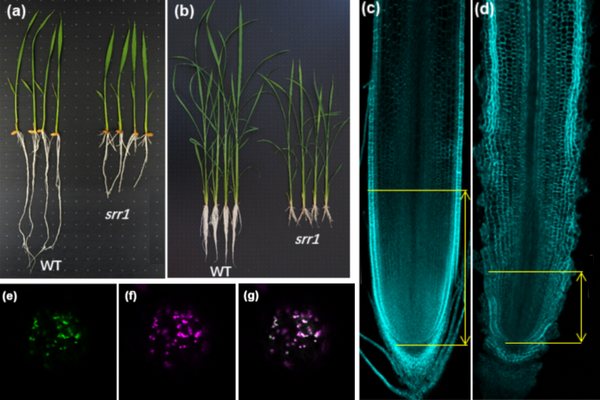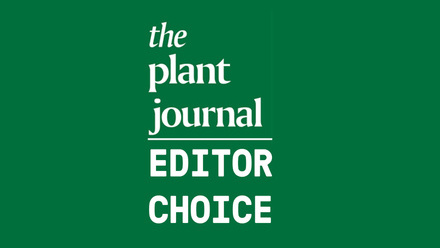TPJ article: Glycosylation in the Golgi Guides Cellulose Synthesis at the Cell Wall
Glycosylation in the Golgi Guides Cellulose Synthesis at the Cell Wall
Peitong Wang,Naoki Yamaji,Jian Feng Ma
A Golgi-localized glycosyltransferase, OsGT14;1, is required for growth of both roots and shoots in rice
One of the first things a biology student learns about plant cells is how they differ from animal cells: they contain plastids and a central vacuole, and they are surrounded by a cell wall. This cell wall provides mechanical support to the plant while still allowing for growth, facilitates the uptake of water and nutrients, and acts as the first line of defense against pathogens. Yet the cell wall remains relatively poorly understood. This is partly due to its sheer complexity - the cell wall is a heterogeneous biopolymer made of dozens of different polysaccharides, phenolics, and proteins woven together into a structure that is quite difficult to investigate.
Cellulose is the most prevalent of the cell wall polymers and is comprised of very long, linear chains of glucose that are produced by cellulose synthases (CESAs) located at the plasma membrane. Cellulose provides much of the structural integrity of the cell wall. Hemicelluloses function to crosslink the larger cellulose molecules, weaving between them to form a sturdy matrix. These come in a huge variety of forms. While cellulose is only made up of glucose, hemicellulose encompasses various types of xylans, xyloglucans, and mannans. The cellulose-hemicellulose matrix is embedded in a gel made of pectin, which is another similarly diverse class of polysaccharides.

Figure 1: Knockout mutant phenotypes and subcellular localization of OsGT14;1
(a-b) Phenotypes of WT and srr1 mutant (short rice root 1, the name applied before OsGT14;1 was found to be the causal gene) plants at 8 d (a) and 27 d (b) after germination. (c-d) Longitudinal section of the root tip region in WT (c) and srr1 (d). Yellow lines demarcate the cell division region (e-g) GFP fluorescence (e), mRFP signal (f), and merged image (g) of a protoplast co-expressing GT14;1-GFP and the Golgi marker ST:mRFP. Modified from Wang et al. (2022).
Since extracellular proteins and phenolic lignin compounds are also incorporated into the cell wall, it can be quite daunting to study this complex structure. Additionally, there are major differences in cell wall composition between monocots, dicots, and gymnosperms. There are even major differences in cell wall composition within a single plant, with woody xylem cells having cell walls different from those of mesophyll cells or root endodermal cells. Considering this extreme complexity, it is not surprising that an estimated 15% of all genes in the Arabidopsis genome are involved in cell wall biosynthesis and maintenance.
An article published in issue 111:4 of The Plant Journal addresses a previously unknown but seemingly major component of the cell wall biosynthetic process. Wang et al. have been studying the intersection between root development and nutrient uptake, and they performed a straightforward genetic screen in rice (Oryza sativa), looking for mutants with short root phenotypes. They found a mutant with a 60% reduction in root length (Figure 1a,b), and noticed that it also had altered root cell length (Figure 1c,d) and lower agronomic quality. Genetic mapping revealed a mutation in a gene encoding a previously undescribed glycosyltransferase (GT), which they named OsGT14;1. OsGT14;1 is expressed in both the roots and the shoots, and is localized to the Golgi apparatus (Figure 1e-g). Analysis of the cell wall composition of these mutants revealed a striking 30% reduction in total cellulose compared to wild type. However, despite this reduced cellulose phenotype, the expression of CESA genes was unchanged.
The corresponding author, Professor Jian Feng Ma, speculated that the role of OsGT14;1 might be to glycosylate proteins involved in the assembly and/or transport of CESAs, somehow disrupting their proper function before they get to the plasma membrane. Clearly, renewed attention should be paid to the role of the Golgi apparatus in cell wall construction and maintenance. It seems there is more to the story of cellulose synthesis than a few protein complexes on the plasma membrane.



